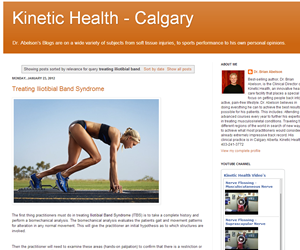Iliotibial Band Syndrome (ITBS) or Runner’s Knee
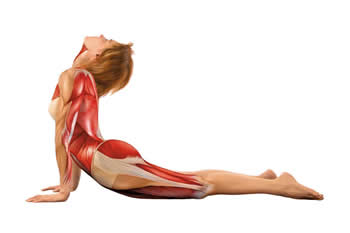 Iliotibial Band Syndrome (ITBS) is a leading cause of lateral pain on the outside of the knee.
Iliotibial Band Syndrome (ITBS) is a leading cause of lateral pain on the outside of the knee.
It is typically caused by overuse and repetitive actions such as running, hiking , breast stroke, cycling, sprinting, or inadequate warm-ups and cool-downs. These repetitive actions results in irritation to the Iliotibial Band of tissue.
ITBS presents as:
- A sharp or burning pain on the lateral aspect of the knee.
- Pain radiating up the side of the hip or thigh.
- Swellling at the location of discomfort.
- Snapping and popping sensation when the knee is bent.
- About the Iliotibial Band
- Initial Self-Treatment
- Treating ITBS with ART
- Exercise Books
- Exercise Videos
- Exercise Blogs
About the Iliotibial Band
The Iliotibial Band provide stability to the knee and assist in flexion of the knee joint. When the Iliotibial Band is shortened or stressed, the repetitive actions of the knee during running and walking causes friction and inflammation along the iliotibial band.
This pain typically occurs when:
- The Iliotibial Band moves across the lateral femoral epicondyle.
- The knee is flexed at an angle greater than 30 degrees, and the Iliotibial Band moves back behind the lateral femoral epicondyle.
- The knee is extended and the Iliotibial Band shifts forward in front of the lateral femoral epicondyle.
With ITBS, the bursa often becomes inflamed, manifesting as a clicking sensation as the knee flexes and extends.
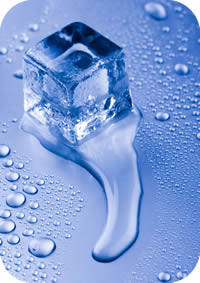 Icing for Initial Self-Treatment
Icing for Initial Self-Treatment
We usually recommend the RICE protocol (Rest, Ice, Compression, and Elevation) when you first injure your Iliotibial Band. This will help to reduce the inflammation caused by the injury.
- Rest – Avoid putting additional stress on the knee.If necessary, use crutches to support your weight, along with a neoprene brace to keep the knee locked in extension.
- Ice – Apply ice to the knee for 20-30 minutes, every 2-3 hours, until the swelling is reduced.
- Compression – Apply an elastic tensor bandage your knee in conjunction with the ice, to reduce swelling.
- Elevation – Elevate your leg to help reduce inflammation. Just place a rolled up blanket or pillow under your knee.
This treatment is often combined with stretching of the hamstrings, gluteal musculatures, and hip adductors.
In addition, non-steroidal anti-inflammatory drugs (NSAIDs) are often prescribed to control pain and inflammation.
Treating ITBS (Runner’s Knee) with ART
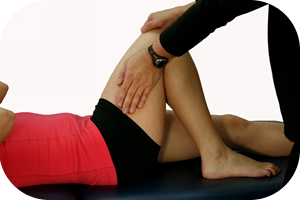 In order to achieve long-lasting results, your practitioner will need to treat all the structures in the Iliotibial Band’s kinetic chain (both above and below the area of injury), as well as the Iliotibial band itself.
In order to achieve long-lasting results, your practitioner will need to treat all the structures in the Iliotibial Band’s kinetic chain (both above and below the area of injury), as well as the Iliotibial band itself.
Patterns of dysfunction will continue to develop if any segment of the kinetic chain is not functioning properly.
Effective treatment of ITBS, like that of any other soft-tissue injury, requires an alteration in tissue structure to break up the restrictive cross-fibre adhesions and restore normal function to the affected soft-tissue areas.
To truly resolve ITBS, every structure that crosses the lateral side of the knee (and their antagonists) must be evaluated, treated, and released, including:
- Restrictive adhesions that attach the ITB to surrounding structures.
- The muscles, ligaments, menisci, and knee capsule that form part of the iliotibial band’s kinetic chain.
- Restrictions in the hip, psoas, and internal and external hip rotators.
Unfortunately, since most practitioners rarely evaluate and treat all of these structures, it is common for this condition to never fully resolve.
The actual sequence and content of each treatment ca n vary greatly since ITBS can be caused by dysfunctions in a variety of structures along any part of the kinetic chain. Patients may show exactly the same symptoms of ITBS, but have completely different soft-tissue injuries. This is why generic treatment methodologies often do not work when treating ITBS.
Books to Help you Heal
Kinetic Health provides a number of excellent resources that can help you to resolve your knee injuries.
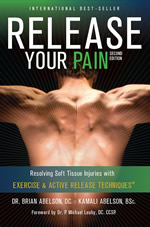 Release Your Pain: 2nd Edition
Release Your Pain: 2nd Edition
Dr.Abelson’s international best-seller – Release Your Pain – provides a detailed description about the anatomy, causes and kinetic chain of Knee Injuries. It discusses means for resolving ITBS, and provides specially selected exercises to help you begin the process of healing from this condition.
Visit our website at www.releaseyourbody.com to purchase your eBook or hard-copy.
Exercise Videos for ITBS
The following videos provide extra information about knee injuries. Click on the left and right arrows to scroll through these videos.
- One Leg Split Squat
- Click To PlayPlay Video
The one leg split squat or Bulgarian split squat is an excellent exercise for activating the glutes (external hip rotators). Key exercise in rehabing back, hip, knee, ankle and even foot injuries.
- 4 Way Tubing or 4 Way Cable Exercise
- Click To PlayPlay Video
Great exercise for balancing out the leg adductors, abductors, hip flexors and hip extensors. Often used for rehabing knee injuries in our clinic. This exercise should be combined with a Bulgarian split squat.
- Foam Roller – Glute & IT Band
- Click To PlayPlay Video
The foam roller is a great way to do a myofascial release of both the glutes and the IT band
- Foam Roller – The Quadriceps
- Click To PlayPlay Video
The quadriceps is a group of four muscles that run along the front of your thigh. This foam roller exercise helps to release restrictions in this group of muscles.
- Foam Roller Hamstrings
- PNF Stretch – Glutes and Piriformis
- Click To PlayPlay Video
PNF Stretching is a great way to release both the Glutes and Piriformis muscles. Common structures involved in low back pain, sciatica, and lower extremity problems.
- PNF – Hamstring Stretch
- Click To PlayPlay Video
PNF Stretching is a great way to release the hamstring muscles. A common structures involved in low back pain, sciatica, knee pain, and lower extremity problems.
- PNF – Quadriceps
- Click To PlayPlay Video
PNF Stretching is a great way to release the quadriceps muscles. A common structure involved in knee pain, and lower extremity problems.
- PNF – Quadriceps
- Click To PlayPlay Video
PNF Stretching is a great way to release the quadriceps muscles. A common structure involved in knee pain, and lower extremity problems.
Related Blog Articles by Dr. Abelson
Click on the following blog articles for additional information on ITBS (Runner’s Knee).

Iliotibial Band Syndrome (ITBS) – Part 1
Iliotibial Band Syndrome (ITBS) is a common injury that affects runners and cyclists. Using conventional treatments, this condition often never completely resolves since they typically do not address all of the key structures involved in the injury.
- Iliotibial Band Syndrome (ITBS) – Part 2
- Iliotibial Band Syndrome (ITBS) – Part 3
- Iliotibial Band Syndrome (ITBS) – Part 4
Treating Iliotibial Band Syndrome
The first thing practitioners must do in treating Iliotibial Band Syndrome (ITBS) is to take a complete history and perform a biomechanical analysis. The biomechanical analysis evaluates the patients gait and movement patterns for alteration in any normal movement. This will give the practitioner an initial hypothesis as to which structures are involved.

